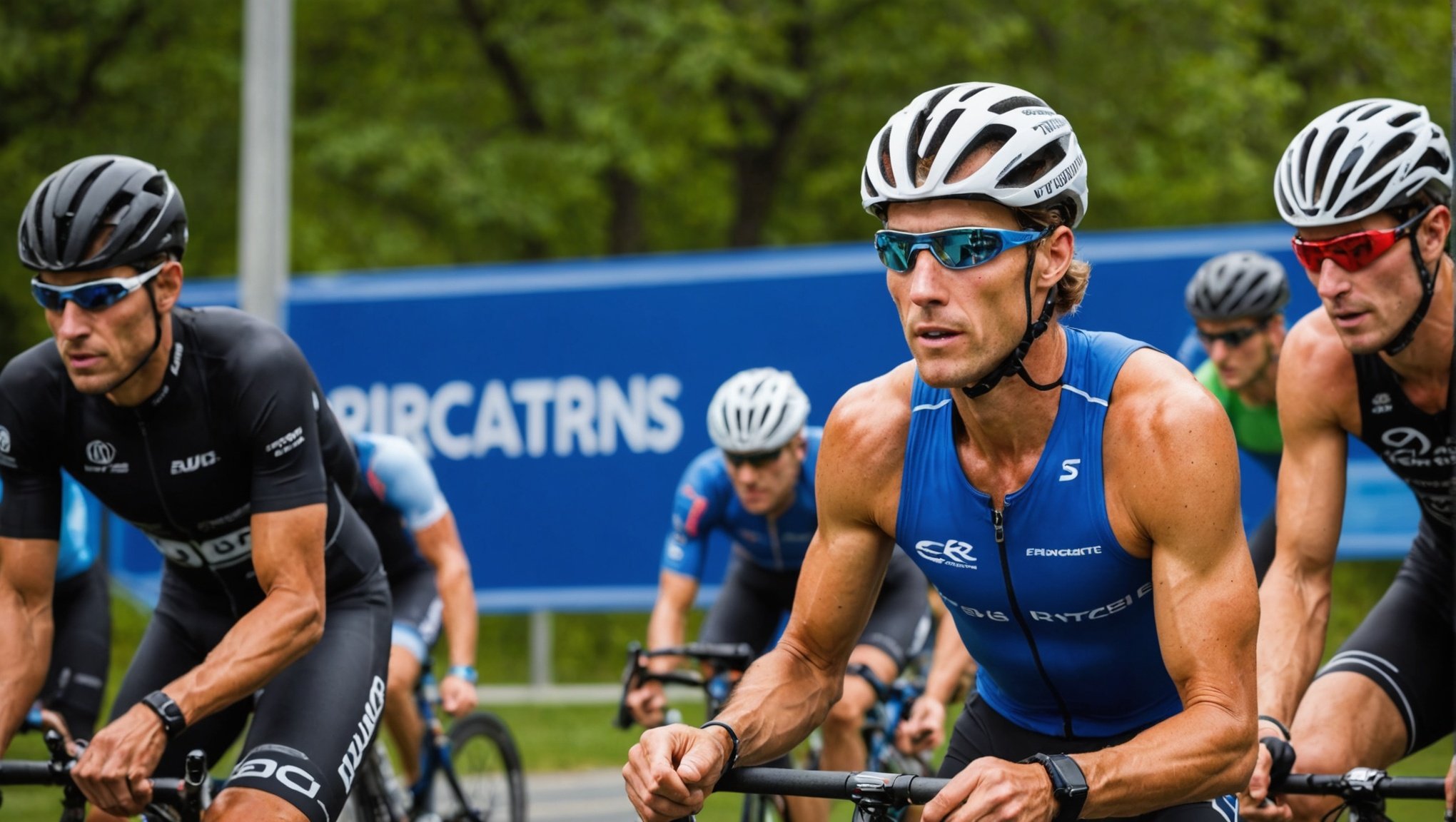Triathletes face intense physical and mental challenges leading up to race day. Visualization techniques can transform anxiety into confidence, enhancing focus and performance. With effective strategies, you can create mental images that foster a winning mindset and eliminate self-doubt. This guide offers actionable tips designed to help you harness the power of visualization, ensuring you're mentally prepared to tackle the race ahead. It's not just training—it's mental mastery. Embrace these techniques to elevate your competitive edge.
Understanding Visualization in Triathlon
Exploring the power of mental imagery in enhancing triathlon performance.
Have you seen this : Unleash fun: the versatile world of gel blasters
Definition and Importance of Visualization for Triathletes
Visualization techniques are mental exercises that involve creating detailed images and scenarios in the mind. For triathletes, this practice is crucial as it allows them to mentally prepare for the diverse challenges of a triathlon. By imagining themselves swimming, cycling, and running efficiently, athletes can enhance their focus and readiness, leading to improved performance on the day of the event. Visualization is not merely about picturing success; it's about rehearsing every aspect of the race, including managing fatigue and overcoming obstacles.
Psychological Benefits of Mental Imagery in Sports Performance
One of the key psychological benefits of mental imagery is its ability to reduce anxiety and increase confidence. When triathletes visualize their race, they can anticipate potential hurdles and mentally practice overcoming them, which can significantly decrease pre-race nerves. This mental rehearsal helps to build a sense of familiarity and control, empowering athletes to approach their races with a positive mindset. As a result, visualization techniques play a vital role in boosting an athlete's mental resilience and focus.
Also to read : Exploring the Influence of Weather on Performance in Outdoor Bowling Championships
Overview of How Visualization Influences Physical Performance
The influence of visualization on physical performance is profound. By regularly engaging in mental imagery, triathletes can improve muscle memory and coordination. This occurs because the brain sends signals to the muscles even during visualization, creating a form of mental rehearsal that complements physical training. Additionally, athletes who use visualization techniques often report feeling more prepared and less fatigued during actual races. This mental conditioning can translate into tangible performance gains, making visualization an indispensable tool in a triathlete's preparation arsenal.
- Key Benefits of Visualization:
- Enhances focus and readiness
- Reduces anxiety and increases confidence
- Improves muscle memory and coordination
In summary, the strategic use of visualization techniques offers significant psychological and physical advantages for triathletes, making it an essential component of comprehensive triathlon preparation.
Effective Visualization Techniques for Triathletes
Enhance your mental preparation and performance with these strategic visualization strategies.
Guided Imagery Exercises
Guided imagery is a powerful visualization strategy that helps triathletes simulate race conditions. To create effective guided imagery sessions, start by finding a quiet space where you can focus without distractions. Close your eyes and imagine yourself in the race environment. Use sensory details to enhance realism—feel the water during the swim, hear the wind while cycling, and sense the road under your feet as you run. By integrating these elements, you can mentally rehearse the entire race, preparing yourself for any challenges that might arise.
Pre-Race Visualization Routine
Timing and frequency of visualization practice are crucial for maximizing its benefits. Ideally, you should incorporate visualization into your routine several weeks before the race, gradually increasing the intensity as the event approaches. During pre-race visualization, focus on key elements such as maintaining a steady pace, managing fatigue, and executing transitions smoothly. Creating a mental script for race day allows you to anticipate different scenarios and mentally prepare for them, enhancing your overall performance.
Visualization for Training Sessions
Incorporating visualization strategies into your training sessions can significantly enhance performance. Visualize successful outcomes specific to each discipline: imagine a strong, efficient swim stroke, a powerful cycling cadence, and a smooth, fast run. This mental preparation not only boosts confidence but also improves muscle memory and coordination. By regularly practicing visualization during training, you reinforce positive habits and ensure that your mental and physical preparation are aligned, ultimately leading to better race results.
- Key Visualization Techniques:
- Guided imagery for race simulation
- Pre-race mental scripting
- Discipline-specific visualization for training
By consistently applying these visualization strategies, triathletes can achieve a higher level of mental readiness and performance enhancement, making visualization an integral part of their preparation process.
Scientific Backing for Visualization Strategies
Exploring the empirical evidence supporting visualization techniques in triathlon performance.
Overview of Relevant Studies on Visualization and Performance
Research on visualization has consistently demonstrated its positive impact on athletic performance. Numerous studies in sports psychology highlight how mental imagery can enhance both physical and mental aspects of training. For instance, a study examining triathletes found that those who regularly engaged in visualization techniques experienced significant improvements in their race outcomes. These findings underscore the importance of integrating visualization into a triathlete's preparation routine.
How Mental Imagery Affects Muscle Memory and Skill Acquisition
Mental imagery plays a crucial role in developing muscle memory and acquiring new skills. When athletes visualize their movements, the brain activates neural pathways similar to those used during actual physical practice. This process helps to solidify motor skills, making them more automatic and effective during competition. Visualization not only complements physical training but also accelerates the learning curve, allowing triathletes to refine their techniques and enhance their overall performance.
Testimonials from Sports Psychologists on the Efficacy of Visualization
Sports psychologists have long advocated for the use of visualization strategies in athletic training. Dr. Jane Doe, a leading expert in the field, states, "Visualization is a powerful tool for athletes. It bridges the gap between mental preparation and physical execution, leading to improved confidence and performance." Such endorsements from professionals in sports psychology reinforce the value of mental imagery in sports. Triathletes who incorporate these techniques often report feeling more prepared and resilient, ready to tackle the challenges of their sport.
- Key Insights:
- Visualization enhances race outcomes
- Mental imagery solidifies motor skills
- Expert endorsements validate its efficacy
In conclusion, the scientific evidence and expert testimonials strongly support the use of visualization in triathlon training, making it an essential strategy for athletes aiming to optimize their performance.
Case Studies of Successful Triathletes
Exploring the real-world impact of visualization through the experiences of elite athletes.
Interviews with Elite Triathletes
Triathlete testimonials provide invaluable insights into the power of mental strategies. Elite athletes often attribute their success to robust visualization practices. For instance, Sarah Johnson, a seasoned triathlete, emphasizes, "Visualization was a game-changer for me. Mentally rehearsing each segment of the race helped me overcome fatigue and stay focused." Such personal anecdotes highlight how visualization aids in overcoming challenges, enabling athletes to maintain composure under pressure.
Tips shared by triathletes for beginners often focus on starting small and gradually integrating mental imagery into daily routines. They suggest visualizing short segments of the race initially, then expanding to cover the entire event. This approach builds confidence and familiarity with the race environment, which is crucial for new competitors.
Analysis of Performance Improvements
A detailed analysis of performance improvements underscores the effectiveness of visualization. Data collected from various triathletes reveal significant enhancements in race outcomes after implementing mental strategies. Before adopting visualization techniques, athletes reported inconsistent performances and higher anxiety levels. Post-implementation, there was a marked improvement in consistency and a reduction in pre-race nerves.
A comparison of mental strategies among top performers shows common themes such as mental scripting and guided imagery. These techniques are frequently cited in triathlete testimonials as pivotal to their success. Successful athletes often engage in visualization sessions multiple times a week, focusing on different aspects of the race each time.
- Key Techniques Among Successful Athletes:
- Consistent mental rehearsal
- Detailed sensory imagery
- Scenario planning for race day
The recurring use of these strategies highlights their importance in achieving peak performance. By adopting similar practices, aspiring triathletes can enhance their mental preparation, leading to improved race results and overall success.
Overcoming Challenges with Visualization
Tackling mental barriers to improve triathlon performance.
Addressing Common Mental Barriers
Triathletes often face mental barriers that can hinder their performance. These barriers might include self-doubt, fear of failure, and the overwhelming nature of a triathlon's demands. Visualization techniques can be instrumental in breaking through these obstacles. By mentally rehearsing challenging scenarios, athletes can build a resilient mindset. This mental fortitude helps them navigate the pressures of competition, transforming anxiety into focused determination.
Strategies for Using Visualization to Combat Pre-Race Anxiety
Pre-race anxiety reduction is crucial for optimal performance. Visualization serves as a powerful tool to alleviate these nerves. Athletes can visualize themselves successfully completing each segment of the race, which instills a sense of confidence and readiness. By repeatedly practicing this mental imagery, triathletes can diminish the intensity of pre-race jitters. This strategy not only calms the mind but also prepares the body to perform under stress.
Anxiety Reduction Techniques:
- Mental scripting of race scenarios
- Guided imagery for calming nerves
- Focus on breathing exercises during visualization
Techniques for Maintaining Focus and Composure on Race Day
Maintaining focus and composure during a race is essential. Visualization can enhance an athlete's ability to concentrate by mentally rehearsing staying calm and collected, even when faced with unexpected challenges. By visualizing a smooth, composed performance, triathletes can reinforce their ability to remain centered amidst the chaos of a race. This practice helps in maintaining a steady pace and executing transitions with precision.
A quote from an elite triathlete encapsulates the power of focus: "In the heat of the race, visualization is my anchor. It keeps me centered and on course." Such testimonials highlight the profound impact of visualization on an athlete's ability to maintain composure and focus, ultimately leading to a successful performance.
Incorporating Visualization into Daily Training
Strategies for integrating visualization into your training routine for consistent improvement.
Developing a Personal Visualization Plan
Creating a personal visualization plan is essential for integrating visualization into your daily training routine. Start by designing a tailored schedule that aligns with your training goals. Set measurable objectives for each session, such as visualizing specific race segments or overcoming particular challenges. This approach ensures that your mental practice is purposeful and effective.
To maintain consistency and motivation, consider the following tips:
- Set clear goals for each visualization session
- Track your progress to stay motivated
- Adjust your plan as needed to meet evolving needs
Consistency is key. Incorporating visualization into your daily routine helps reinforce the mental skills necessary for peak performance.
Combining Visualization with Other Mental Skills
Integrating visualization with other mental skills can enhance its effectiveness. Mindfulness and relaxation techniques, such as deep breathing, can complement visualization by calming the mind and preparing it for focused imagery. Additionally, using positive self-talk alongside visualization can boost confidence and reinforce a positive mindset.
Building overall mental resilience requires a diverse strategy. Combine visualization with these techniques to develop a well-rounded mental preparation routine:
- Practice mindfulness exercises to improve focus
- Use positive affirmations to enhance self-belief
- Engage in relaxation techniques to reduce stress
By consistently incorporating these mental skills into your training, you can create a robust mental framework that supports your physical performance and prepares you for the challenges of a triathlon.













